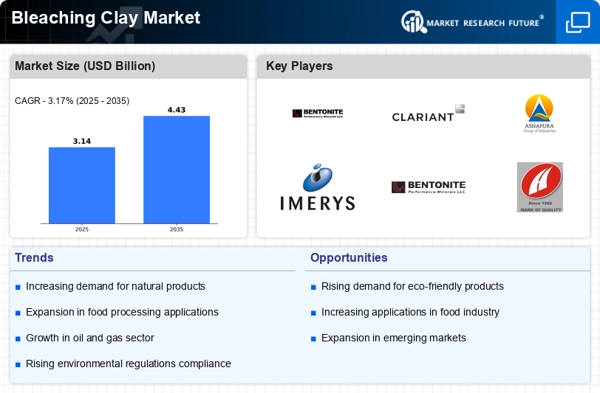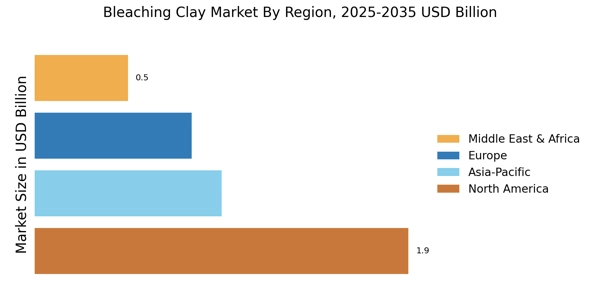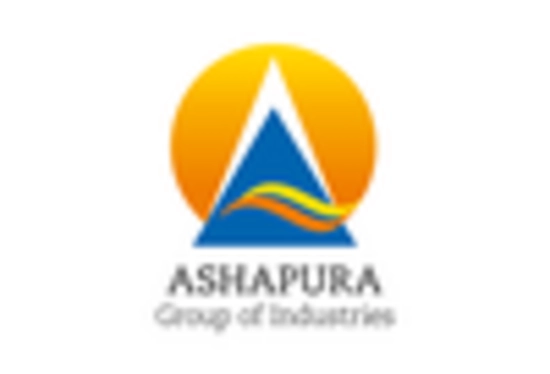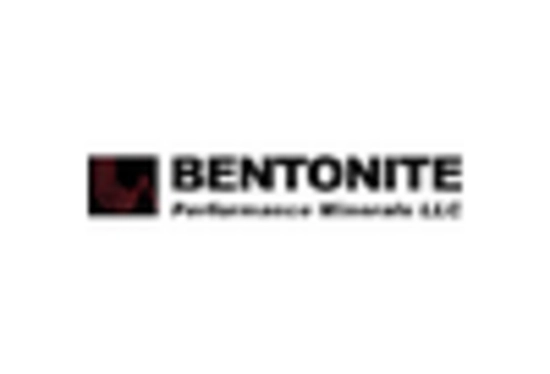Growth in the Personal Care Sector
The growth in the personal care sector is a significant driver for the Bleaching Clay Market. With an increasing focus on skincare and beauty products, manufacturers are seeking high-quality ingredients that enhance product efficacy. Bleaching clay is often used in formulations for its ability to purify and clarify, making it a sought-after component in various personal care products. The Bleaching Clay Market is projected to expand, which may lead to a corresponding rise in the demand for bleaching clay. This trend indicates that the Bleaching Clay Market is likely to benefit from the ongoing growth and innovation within the personal care sector.
Rising Demand for Natural Products
The increasing consumer preference for natural and organic products is driving the Bleaching Clay Market. As consumers become more health-conscious, they are gravitating towards products that are perceived as safe and environmentally friendly. This trend is particularly evident in the food and beverage sector, where bleaching clay is utilized for decolorizing oils and fats. The market for edible oils is projected to grow, which may lead to a corresponding rise in the demand for bleaching clay. Furthermore, the cosmetics industry is also witnessing a shift towards natural ingredients, further propelling the need for bleaching clay. This growing inclination towards natural products suggests a robust future for the Bleaching Clay Market.
Expansion of the Oil and Gas Sector
The expansion of the oil and gas sector is a pivotal driver for the Bleaching Clay Market. As the demand for refined petroleum products increases, the need for effective bleaching agents becomes more pronounced. Bleaching clay is extensively used in the refining process to remove impurities and enhance the quality of lubricants and fuels. According to recent data, the global oil refining capacity is expected to increase, which could lead to a heightened demand for bleaching clay. This trend indicates that the Bleaching Clay Market may experience significant growth as oil and gas companies seek to improve product quality and meet regulatory standards.
Technological Innovations in Processing
Technological innovations in the processing of bleaching clay are likely to enhance the efficiency and effectiveness of its applications, thereby benefiting the Bleaching Clay Market. Advances in extraction and purification techniques can lead to higher quality products with improved performance characteristics. For instance, the development of more efficient activation processes can increase the adsorption capacity of bleaching clay, making it more effective in various applications. This could potentially open new avenues for the use of bleaching clay in industries such as pharmaceuticals and chemicals. As these technologies evolve, they may contribute to a more competitive landscape within the Bleaching Clay Market.
Regulatory Support for Sustainable Practices
Regulatory support for sustainable practices is becoming increasingly influential in shaping the Bleaching Clay Market. Governments are implementing stricter regulations aimed at reducing environmental impact, which encourages industries to adopt eco-friendly materials and processes. This regulatory landscape may drive manufacturers to utilize bleaching clay as a sustainable alternative in various applications, including food processing and cosmetics. The emphasis on sustainability could lead to increased investments in the production and application of bleaching clay, thereby fostering growth within the market. As companies align with these regulations, the Bleaching Clay Market may witness a shift towards more sustainable practices.


















Leave a Comment